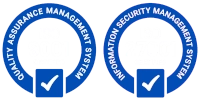The pace of technological progress is ever-increasing, so keeping your software capabilities fresh could be a daunting task. Maintaining competitive and sustainable business growth is highly dependent on software and system adaptation and legacy system modernisation.
The first step towards the software modernisation and digital transformation of any enterprise – big or small – involves defining your goals, requirements and issues. To do so, you should make a thorough assessment of your legacy systems and answer critical questions such as:
- What works well, and what doesn’t in the current system?
- What is the business value of your legacy system?
- How easy or difficult is it to take out the legacy application from the existing IT architecture?
- How do customers and partners interact with your current software?
- What type of issues are users reporting?
- What is the current state of the system after having a full performance review – codebase, infrastructure issues, user interface (UI), etc.?
Also, link your software modernisation efforts to your business goals – new features, scalability, faster time-to-market. Additionally, identify how the system update could impact your company’s revenue, market share, and improve customer services.
The next step is to decide what type of software modernisation you will be able to initiate. You can go for a:
- Complete transformation – starting from scratch, rebuilding and replacing old key components with new technologies.
- Gradual replacement – piecemeal updates of the components of the system. Have in mind that this might cause difficulties in the long term because modern systems are built on top of each other.
- Quick fixes – patching small problems with new code, applications or processes.
- Improvement of the existing systems – by redesigning without introducing new platforms or architecture, focusing more on processes, workflows and management. Rehosting and refactoring code without directly affecting features and functions could be involved.
Final words about Software Modernisation
No matter what you choose, you should not only modernise your software but also prepare for future growth and changes. Keep your documentation neat and complete. This means to document everything – from architecture, requirements, source code and quality assurance to maintenance and guidance for help. Not to mention to define the KPIs that will track your success and build a plan for future updates.
When you have everything clear for yourself, you need to choose the right IT partner. These are the experts who can modernise your legacy system by taking into consideration your goals and requirements. All things considered, having experienced experts in the field is crucial for your modernisation success, so you can count on the help of Blue Tea’s professional team!


